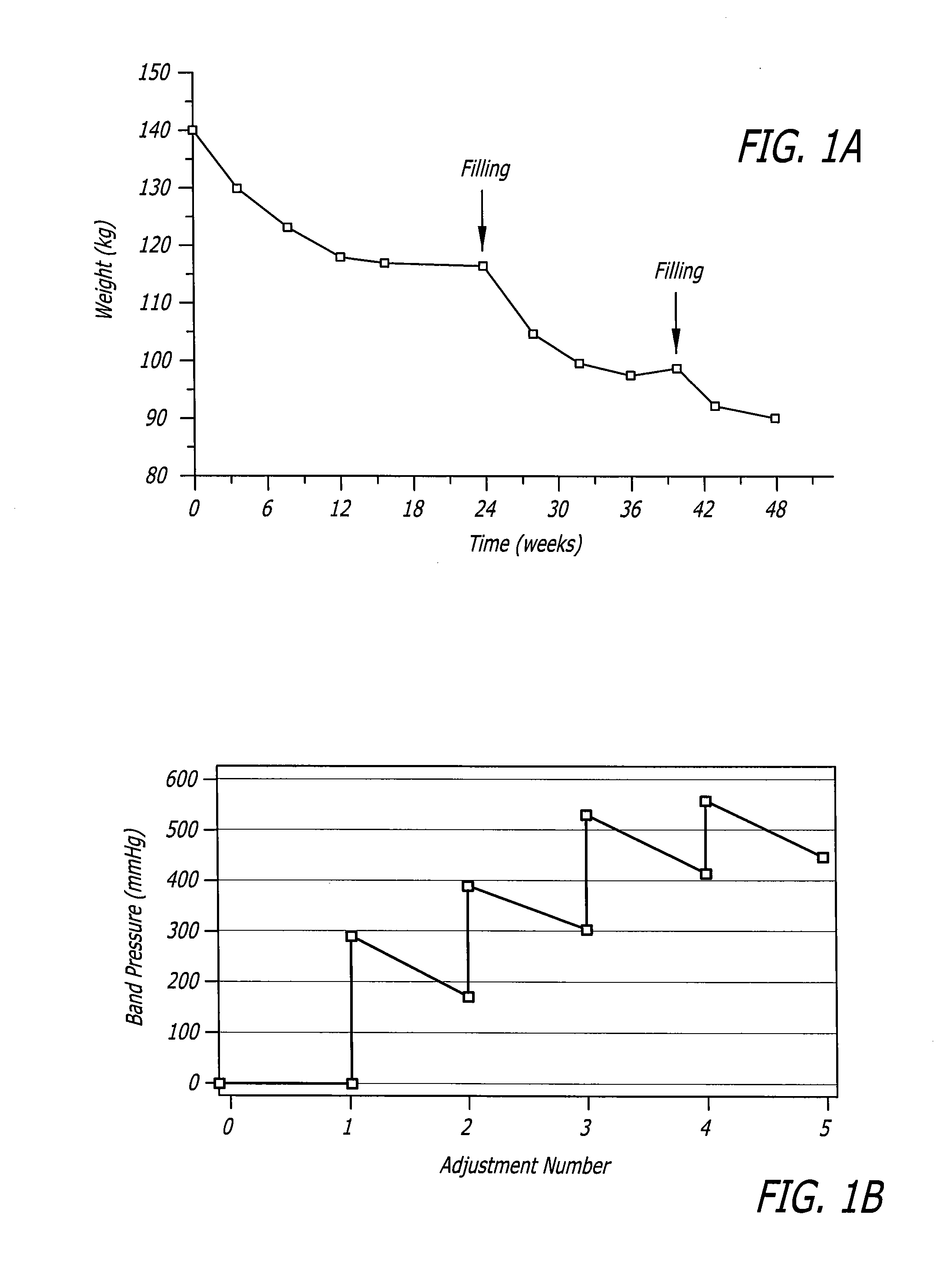More recent data has suggested that over time, the difference diminishes because
gastric bypass results show an early peak in
weight loss followed by subsequent decline.
The patient consequently stops eating, resulting in
weight loss.
Some leakage of
saline may occur out of the band over time.
Air is often trapped in the band initially which may dissolve or dissipate over time.
If the band is too tight or tightened too quickly the patient may feel excessive restriction.
The patient may have a difficult time eating with frequent episodes of
vomiting.
Also, certain foods may get stuck.
Ironically, this may lead to
weight gain as patient learns to cheat the restriction provided by the band by drinking milkshakes and other liquid foods.
Another more serious drawback of excessive tightening is that the band may erode through the
stomach wall if it is left in that state.
Swelling or
edema can cause the band to become too tight.
Despite the recognition of the criticality of band adjustments,
patient compliance remains an issue.
The need for frequent adjustments can be very demanding on these patients in terms of the time away from work and cost of travel.
In the extreme case, many patients opt to have their bands implanted out of the country because of cheaper costs.
After their procedure they cannot afford to travel out of the country for frequent band adjustments. some patients move and subsequently have difficulty finding a surgeon to perform their adjustments.
Even within the U.S. some surgeons will not adjust the bands of patients that were not implanted by them for fear of potential liability.
Further, there is the direct cost of adjustments.
Typically, even when the
surgery is reimbursed by insurance, the adjustments are not, or even when they are, they are inadequately reimbursed.
The patient may not be able to afford the out-of-pocket fees for adjustments which often can be several hundred dollars per adjustment.
Finally, there are complex psychological motivational obstacles that prevent them coming in for the necessary adjustments.
For example, some patients have a fear of the
syringe needle that is used to inject
saline into the band.
Historically, they are not accustomed to the intensive
long term care of their patients.
Many do not have the existing infrastructure within their practices to manage the post-procedural aftercare of the patients.
Consequently they may end up spending less time operating and a considerable amount of time performing adjustments.
If the bands are too loose the patients
eating habits may regress.
Even if they are aware of this it often can take time for them to schedule and receive a proper adjustment.
If the bands are too tight and not adjusted they not only are uncomfortable, but patients may adopt bad
eating habits, such as drinking milkshakes.
Even if the patients are compliant and can overcome the barriers to attending follow-up visits adjustments can be problematic.
Locating the subcutaneous fill port can be difficult.
Repeated needle punctures can lead to infection.
Different bands have different pressure-volume characteristics which can lead to even greater inconsistency.
None of the patients returned to the clinic due to obstruction.
In a
continuation of this work, Fried reported that when patients that had previously lost less than 40% EWL with banding, they were adjusted to 20-30 mmHg intra-band pressure using manometry, resulting in significant weight loss at 12 weeks.
One drawback common among the prior devices that use some type of device to fill and replenish fluid in the balloon portion of the band is that their pressure-volume compliance curves are relatively steep.
 Login to View More
Login to View More  Login to View More
Login to View More 


